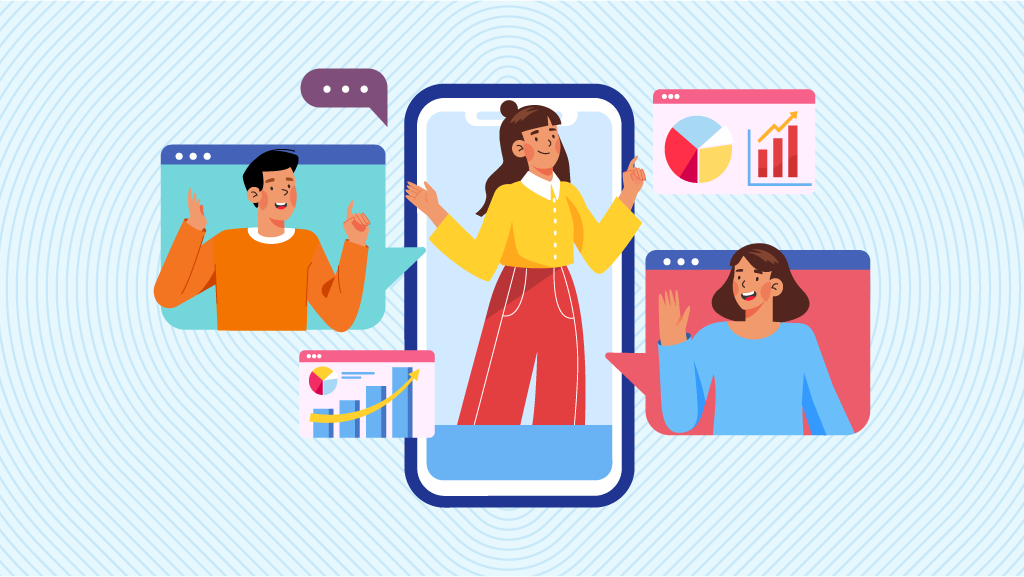Training apps for your employees
Read Time: 4 minutes
Posted on August 24, 2017

Mobile learning (mLearning) has never been more popular; more and more companies are realizing the many benefits of using mobile to train employees and are introducing business learning apps in their companies.
Among other reasons, business learning apps are very effective ways to train staff because:
- They offer bite size lessons that allow employees to retain knowledge better.
- They allow employees to learn anywhere, whether on their commute or at home.
- They are informal, allowing employees to follow their own pace and style of learning.
As mLearning or mobile training apps become more popular, we have also noticed a lot of really interesting and innovative use cases that are pushing apps to even greater innovation and efficiency.
For more on training & coaching apps, read our blog.
Here are our three favourites:
1. Interactive content
Ask any employee if they enjoy after-hours training sessions and their answer without a doubt will be a resounding “no”. Who likes staying at the office after a long day to stare at a PowerPoint presentation while someone else tries to hammer knowledge into their brain?
Traditional after-hours training sessions are not only boring but also very ineffective. If your employees are tired and find training materials unengaging, their retention of knowledge is not going to be great.
So what if we told you that you could take your training materials, make them into an engaging app and have a much higher success rate in training your workforce?
Training apps are very effective ways to train employees because they allow you to structure learning materials in bite-sized chunks that include a variety of media, from video to interactive charts. This magical combination makes for much more engaging content that is easier to understand, comprehend and memorise.
So if you want to make your training materials more engaging and adaptable to the mobile format, these are some of the things you can do:
- Include a variety of media such as audio, video, embedded documents, interactive graphs and charts, infographics, etc.
- Where possible and relevant, include content that can integrate with the mobile device’s native features, such as push notifications and GPS.
- Include weekly or monthly podcasts with the latest information, such as new products, to allow your employees to catch up during their commute.
- Video in particular is a very effective way of engaging employees as they can visually demonstrate a variety of concepts and scenarios, so if you use them prominently you will help employees retain knowledge considerably!
2. Gamification
Many companies are actively using gamification for recruitment, helping them attract more applicants (see our article on how apps can help future proof HR here). But gamification can also be really effective as a training tool; turning learning into a game makes it more fun and interactive.
With a gamified training app, you can create a quiz for each module and ask employees to complete it to arrive at the next level. And as they reach higher levels, you can reward them with points and badges to give them that sweet sense of achievement.
This is a very effective way of encouraging employees to set their own goals and aim higher and higher, while dividing learning into small chunk quizzes makes retention of knowledge easier.
With an app you can also encourage healthy competition between employees by including leaderboards with top performing users; imagine how much your sales team will learn if you turn it into a contest!
3. On-demand learning
Finally, we are seeing a great increase in “on-demand” learning, particularly at companies that cover a wide variety of products and services.
The main benefit of on-demand learning is that it empowers employees to learn new information just in time for a particular purpose, such as a meeting. For this reason, it is a very effective tool for salespeople, particularly those who sell across services or industries and therefore need to be aware of many products and services.
This section of the app could include basic information about relevant products or services, as well as other sales support materials such as guides, checklists and flashcards. Salespeople could consult the app during their commute or right before a meeting.
In this way, you can save employees great time learning resources that they may or may not need and simply provide them with the right resources at the right time. Could this be any more efficient?
In conclusion
We hope you found our app tips useful and that they help you to continue innovating! And if you’ve come across any other great training app ideas please let us know.
To learn more on how you can build a training or learning app read our blog post ” How to make a learning app“

Niamh Conneely
Niamh Conneely is the Content Writer and Marketing Executive at Fliplet – an app building platform that enables anyone to easily create engaging and interactive mobile and web apps.
Niamh has experience in content creation and writing and has achieved two level 6 awards for The Chartered Institute of Marketing. She has developed skills to help organizations deal with the challenges of a fast-moving marketplace. Connect with Niamh on Linkedin.



